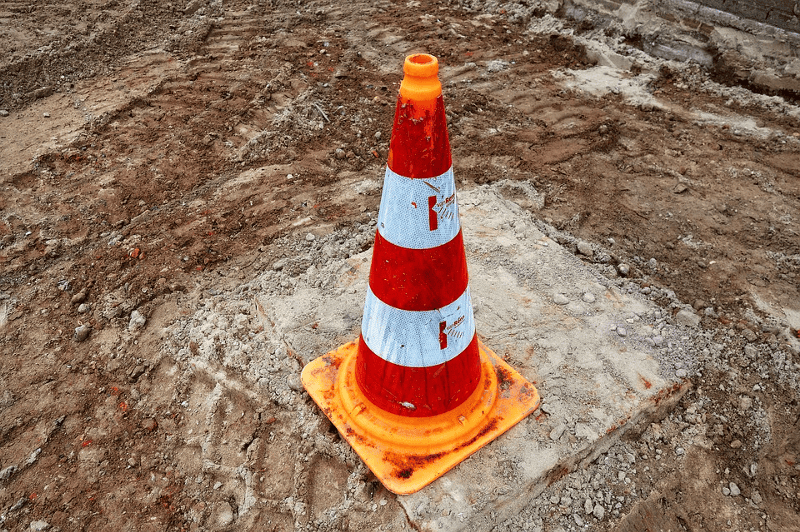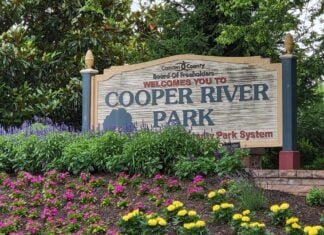
Although Evesham Township has approved the plan, Voorhees residents resume concerns over the development, which requires more than 20 variances.

At its latest meeting, the Voorhees Township Planning Board continued its preliminary site plan and minor subdivision hearings for VRI-W/J&J Voorhees II LLC, an applicant hoping to build a Super Wawa and Tractor Supply Company store at the corner of Kresson Road and Route 73.
The proposed Wawa would be 5,585 square-feet with 16 fueling stations and open 24 hours a day, seven days a week. The Tractor Supply Company store would be 19,097 square-feet with an additional 13,500 square-foot outdoor display area.
Evesham Township Zoning Board and Burlington County Planning Board have already approved the plan, according to the applicant’s attorney, Timothy Prime, as the site spreads over two counties, two townships and Route 73.
The development, which requires more than 20 variances distributed throughout Voorhees and Evesham townships, continues to receive pushback from members of the Voorhees community, as they’ve described the project as a dangerous encroachment upon the intersection, creating increased air, noise and light pollution, as well as congested traffic and heightened crime.
The site requires several street traffic alterations, including adding a three-lane exit/entry way onto Kresson Road along the Route 73 intersection.
Along with lot sizes, parking spaces, fence sizes and light fixture heights, a number of the variances include reducing the legal buffer requirement along side yards of the property. For instance, an ordinance requires a minimum front yard for the Wawa site to Route 73 of 50 feet where 35.2 feet is proposed. Another ordinance requires a minimum rear yard for the Wawa site of 100 feet where 57 feet is proposed.
Representing the objecting side, attorney Howard Sobel, whose law firm is located along the proposed site, questioned Paul Phillips, a planning expert appearing on behalf of the applicant about the reduced buffering encompassed in the project.
Sobel questioned the ability of light and sound from signage, tractor trailers and other potential nuisances to escape through the proposed buffers, which include a basin and a six-foot vinyl fence along the driveway.
“Any commercial use going there would potentially have trucks that may or may not generate noise,” Phillips said.
Sobel inquired about the proposed Wawa sign that would be illuminated 24/7. The monument sign will be approximately 69 to 72 feet from the border of the rural residential zone.
“Will that light be visible to the residents across the way?” Sobel asked.
“It depends on the vantage point, but presumably, yes,” Phillips answered.
Gordon Meth, a licensed professional engineer with the state, presented testimony on behalf of the objecting group.
Meth discussed concerns he gathered from the project’s traffic study from October 2017, which was conducted by Nicholas Aiello, an associate of transportation planning for Maser Consulting.
Meth focused on the trip generations of the project, which he describes as a “potential fatal flaw.”
“I think this board deliberating on this project needs to understand what the real traffic impacts of this site are going to be,” he said.
Meth presented his claims based on the 10th edition of the Trip Generation Manual by the Institute of Transportation Engineers. Although the 10th edition was published in September, Aiello based his study on the 9th, because NJDOT had not adopted the latest edition by that point.
The manual contains definitions that place the proposed Wawa in different land use categories than what was assumed in the project’s traffic study, according to Meth.
Under a new code, the projected Wawa, based on its square feet and gasoline stations, would fall under the “Super Convenience Store with Gasoline” category, which estimates more than 500 trips during the morning peak hour, more than 400 during the midday peak hour and more than 300 during the evening peak hour, according to a combination of research Meth collected.
The planning board questioned the methodology of Meth’s findings, as the data is based off of national projections through specific formulas. The board stressed these averages do not necessarily apply to Voorhees.
“If you want us to be Voorhees-specific and this is our purview — that’s what you’re asking us,” said Deputy Mayor Jason Ravitz. “Well, tell us how many cars go by Kresson Road in the morning from 6 a.m. to 9 a.m., because that road is not our purview and neither is Route 73, but the public good is.”
In rebuttal, Aiello presented the updated trip generation of the application, which was deemed complete by the state, based on the 10th edition manual.
While the new super convenience code does generate more overall primary and pass by trips than the 9th edition projections, the Tractor Supply store generates fewer trips, according to Aiello.
Using the 9th edition, in the evening peak hour, 95 trips were calculated for the Tractor Supply store, 285 trips to Wawa, totaling 380 trips to the site. In the 10th edition, the Tractor Supply store would generate 27 trips and the Wawa would generate 387, during that same time, netting a total of 414 trips.
The morning peak hour generates more uses for both business, totaling 491 trips using the 10th edition.
Aiello says, according to a letter from NJ DOT, Maser’s method of methodology using the 9th edition was considered acceptable.
Aiello said all tractor trailers will remain on Route 73 and will not travel on Kresson, but this does not necessarily include other vehicles related to the site.
While Maser says its traffic study reveals safe travels at the site, which includes recommendations, such as reducing the speed limit along Kresson Road between Covinton Lane and Route 73 from 45 mp to 35 mph, the board and public continued to express concerns about the various perils stemming from the project.
Several members of the public noted the traffic study was conducted during January and February — a time of the year that would ordinarily experience the least amount of foot and bike traffic.
They also drew attention to the days picked for the bank traffic portion of the study, Tuesday and Saturdays from 7 to 9 a.m., as the bank doesn’t open until 8:30 a.m. on weekdays and 9 a.m. on Saturdays.
Residents say the Lions Lake Softball Complex and Kresson Elementary — both located near the site — were not noted in the study.
“Everybody keeps talking about car counts and truck counts and everything like that,” said resident Kevin Mcfadden. “But, nobody seems to think about people in regards to this.”
Several residents living in the immediate area shared personal accounts of hearing or seeing car accidents along Kresson Road approaching Route 73.
“I just think dumping that road right in front of my house is going to be a nightmare. … I don’t know how I’m going to sleep at night with the lights shining and then the traffic noise,” said resident Harold Shively.
Residents said, that while the traffic study reports 50 accidents in that intersection over the last two years, several more go unreported.
“We hear the screeching tires and, we in our home, tense up, because we’re waiting for that sound of that impact,” said resident Eric Goldstein.
Although traffic concerns were a major point of discussion, the public was also perturbed by health and environmental hazards, specifically runoff from the projected facilities that could pollute fresh water wells, which some Kresson-Gibbsboro Road residents use as a source for drinking water.
These runoffs could include anti-freeze leaks and oil leaks related to underground fueling systems.
“I believe that, in my limit of understanding, this board is here to protect the citizens of Voorhees — to keep us safe, to make sure that things don’t happen that are going to cause any more of a dangerous situation than there already is,” Goldstein said.
The next public hearing is scheduled for Wednesday, June 13 at 7:30 p.m.









